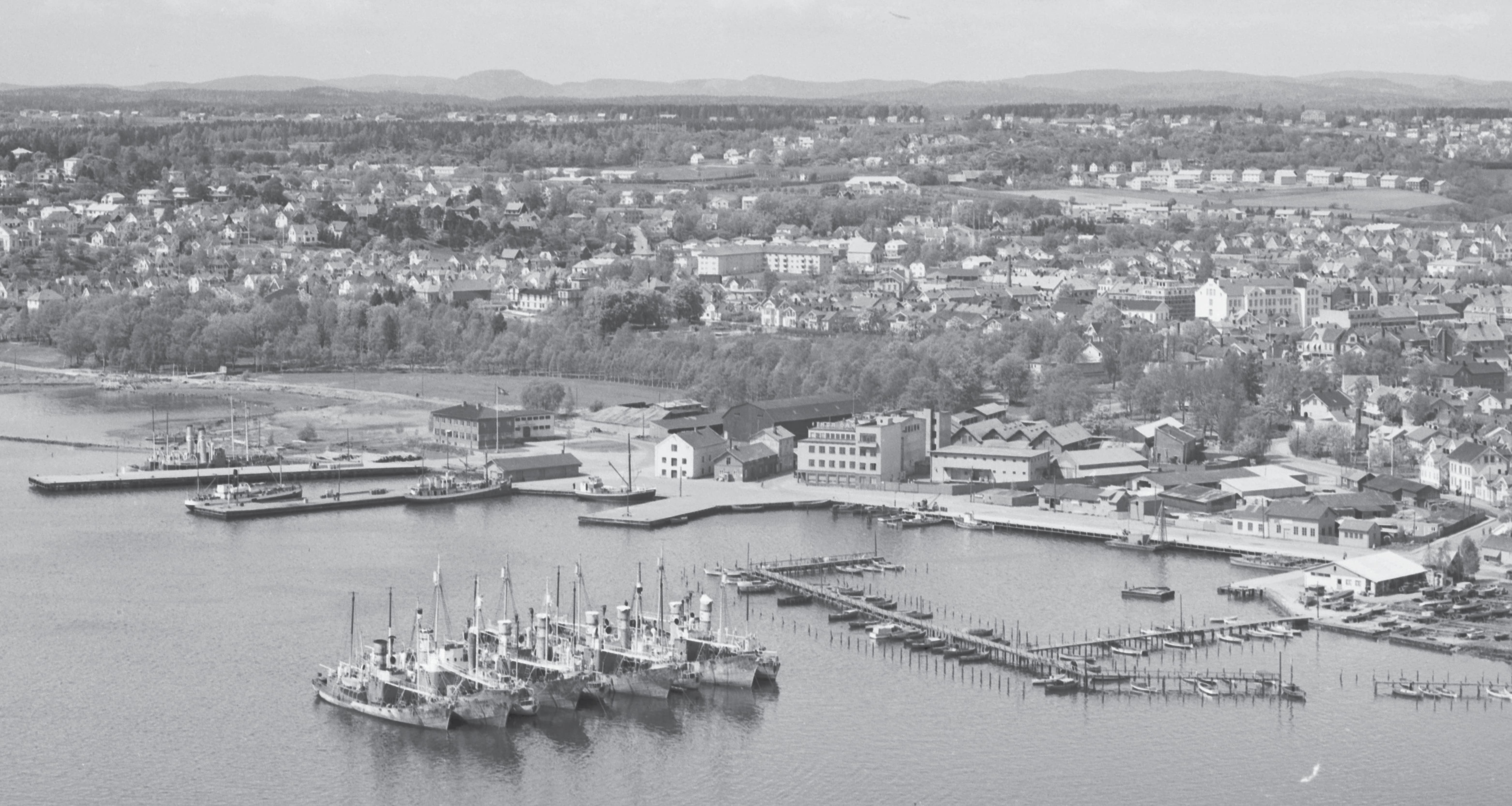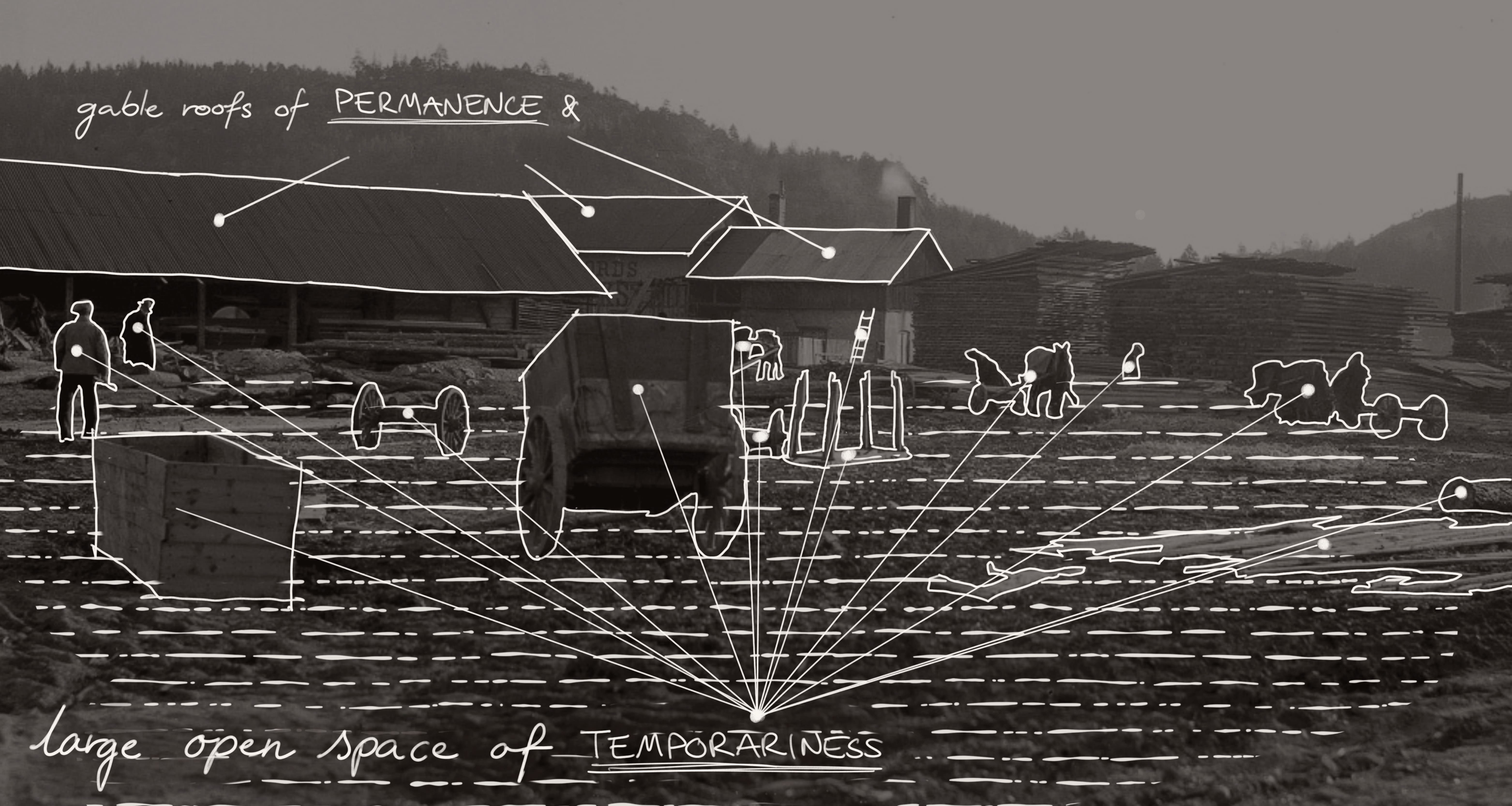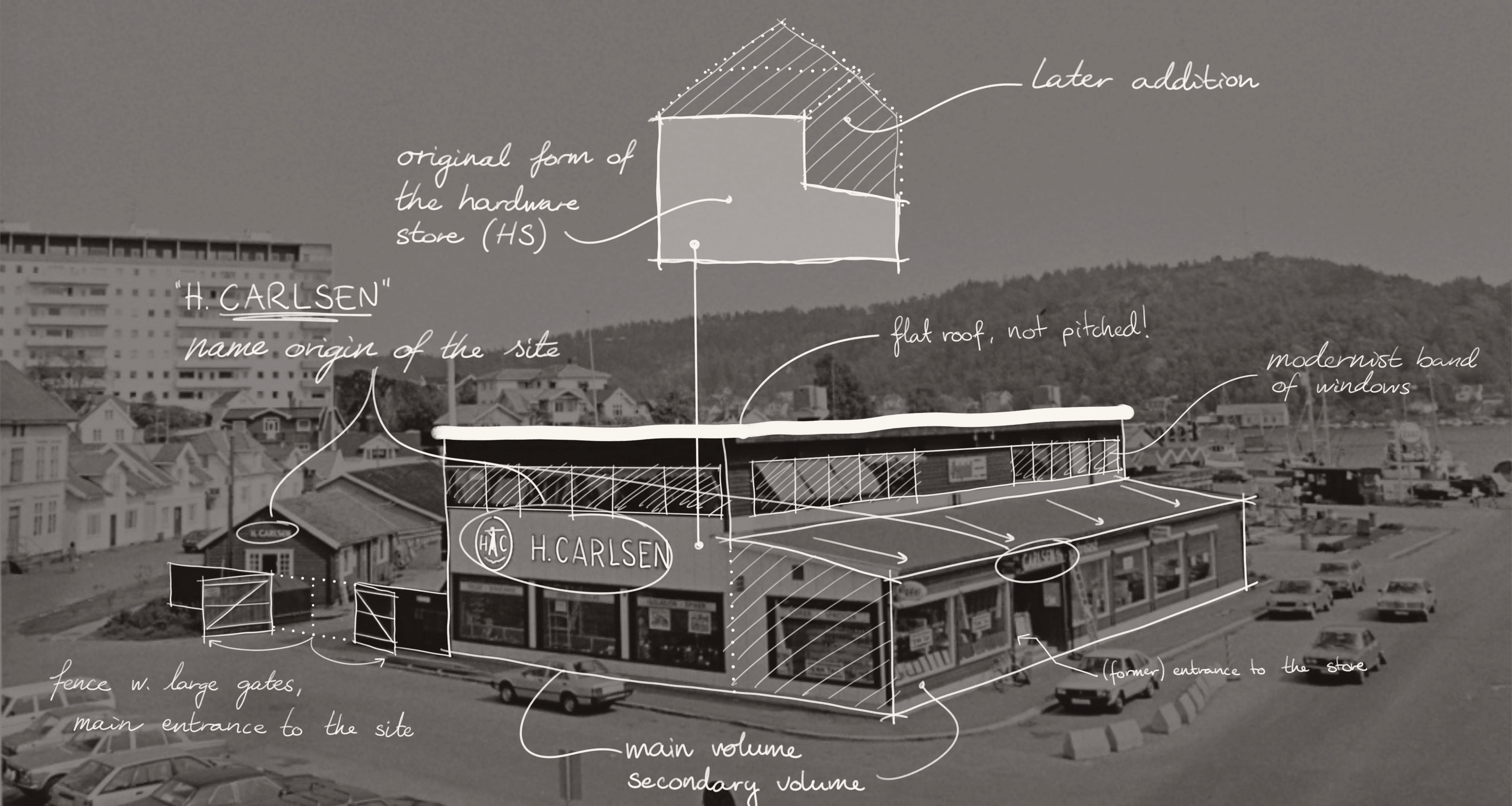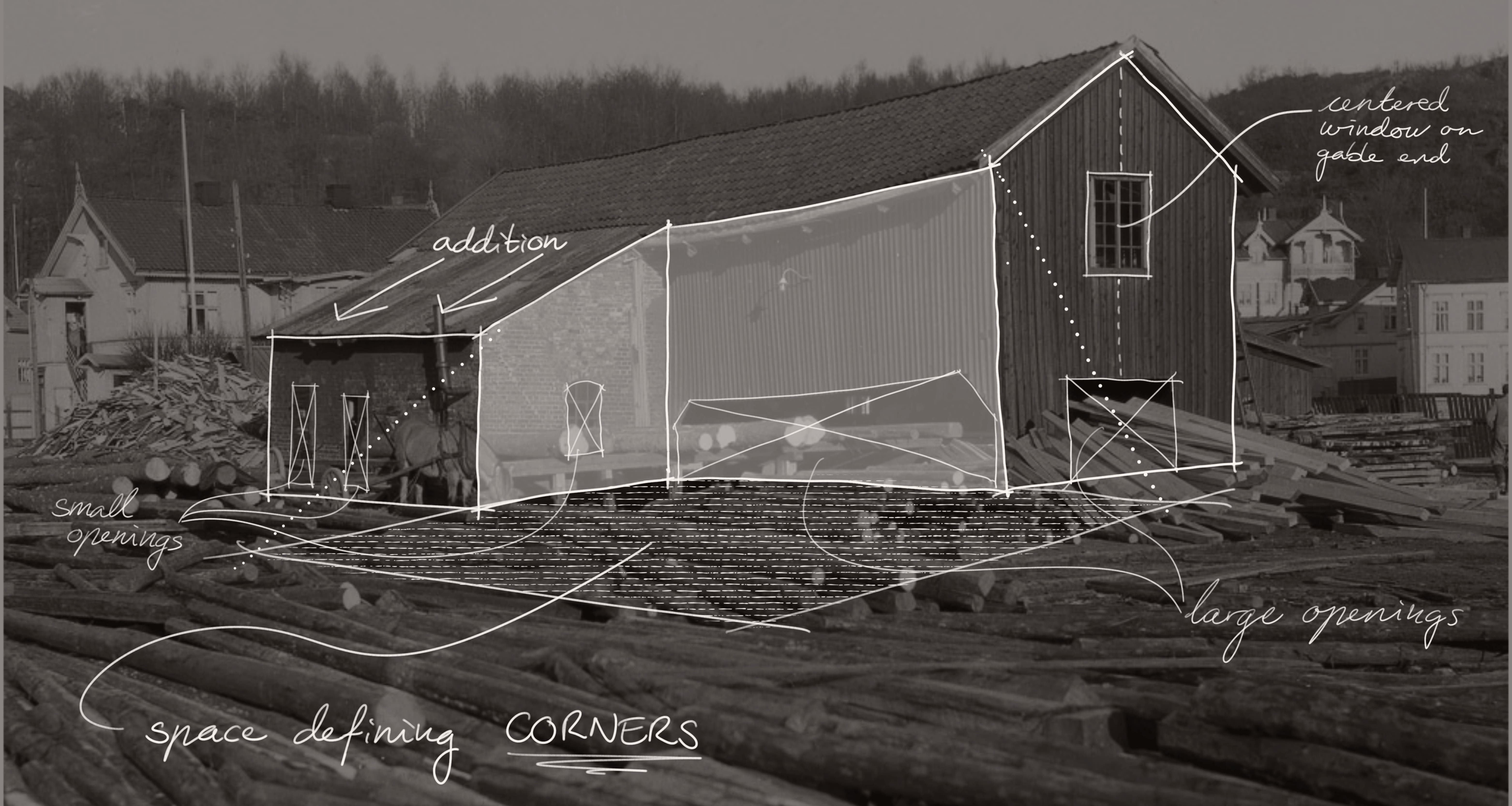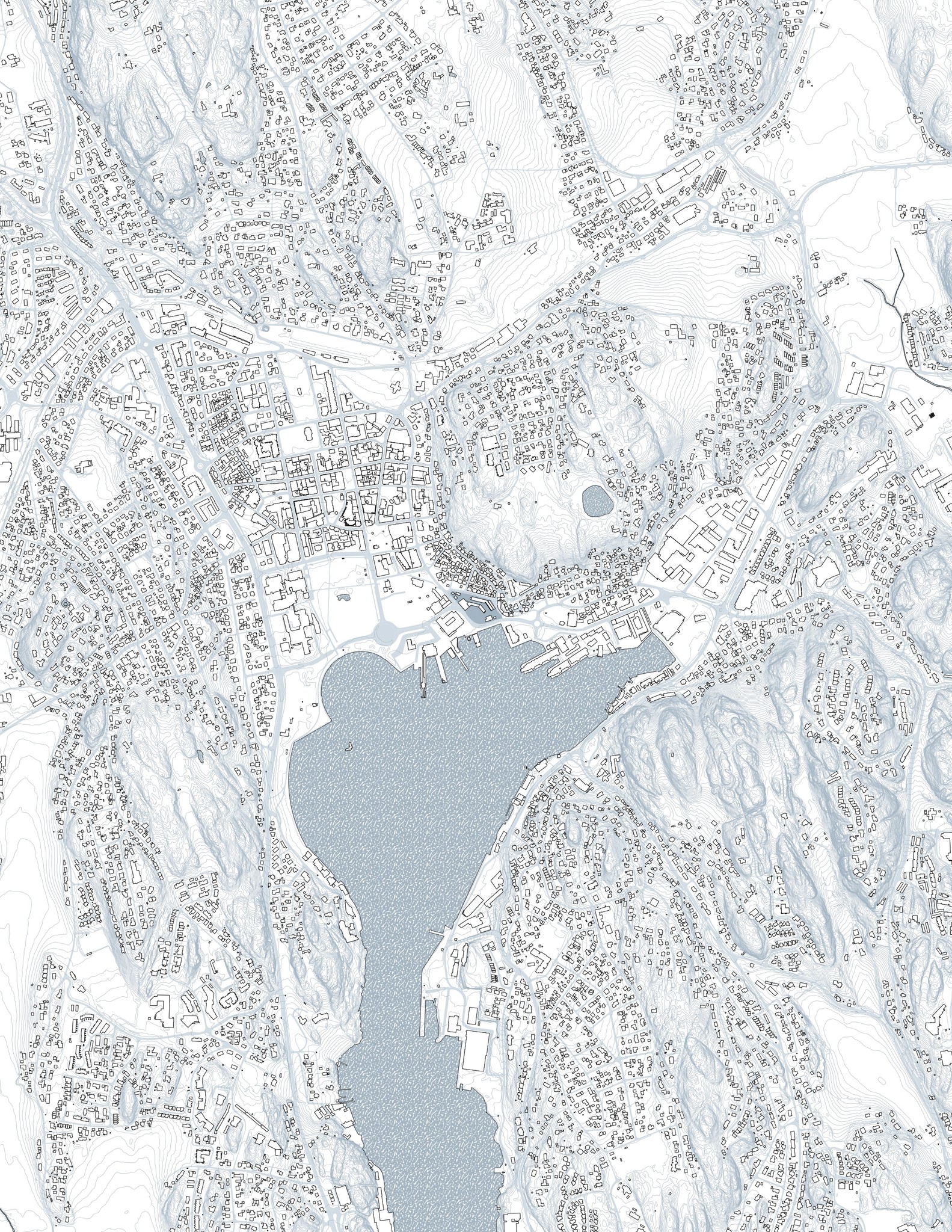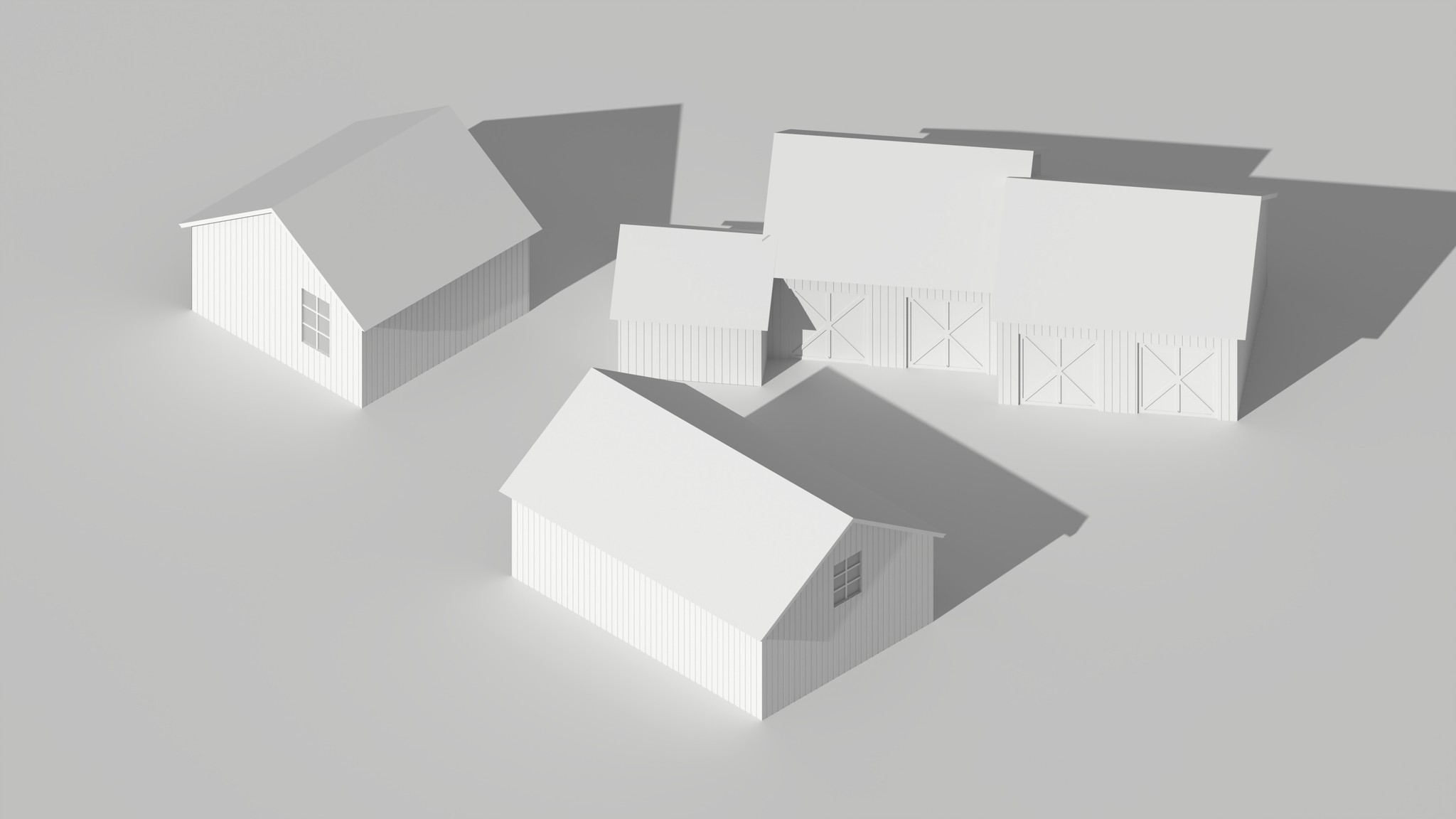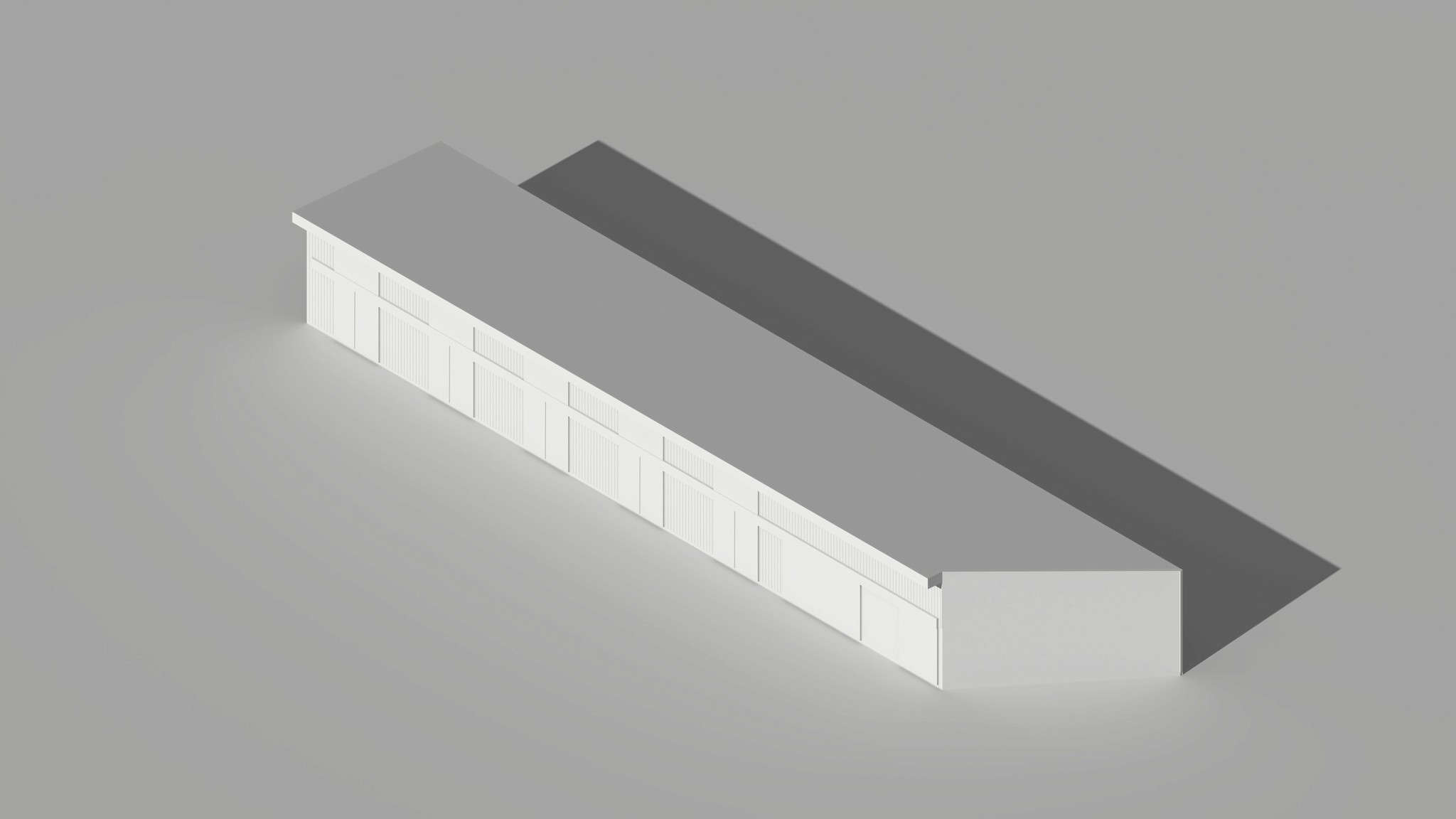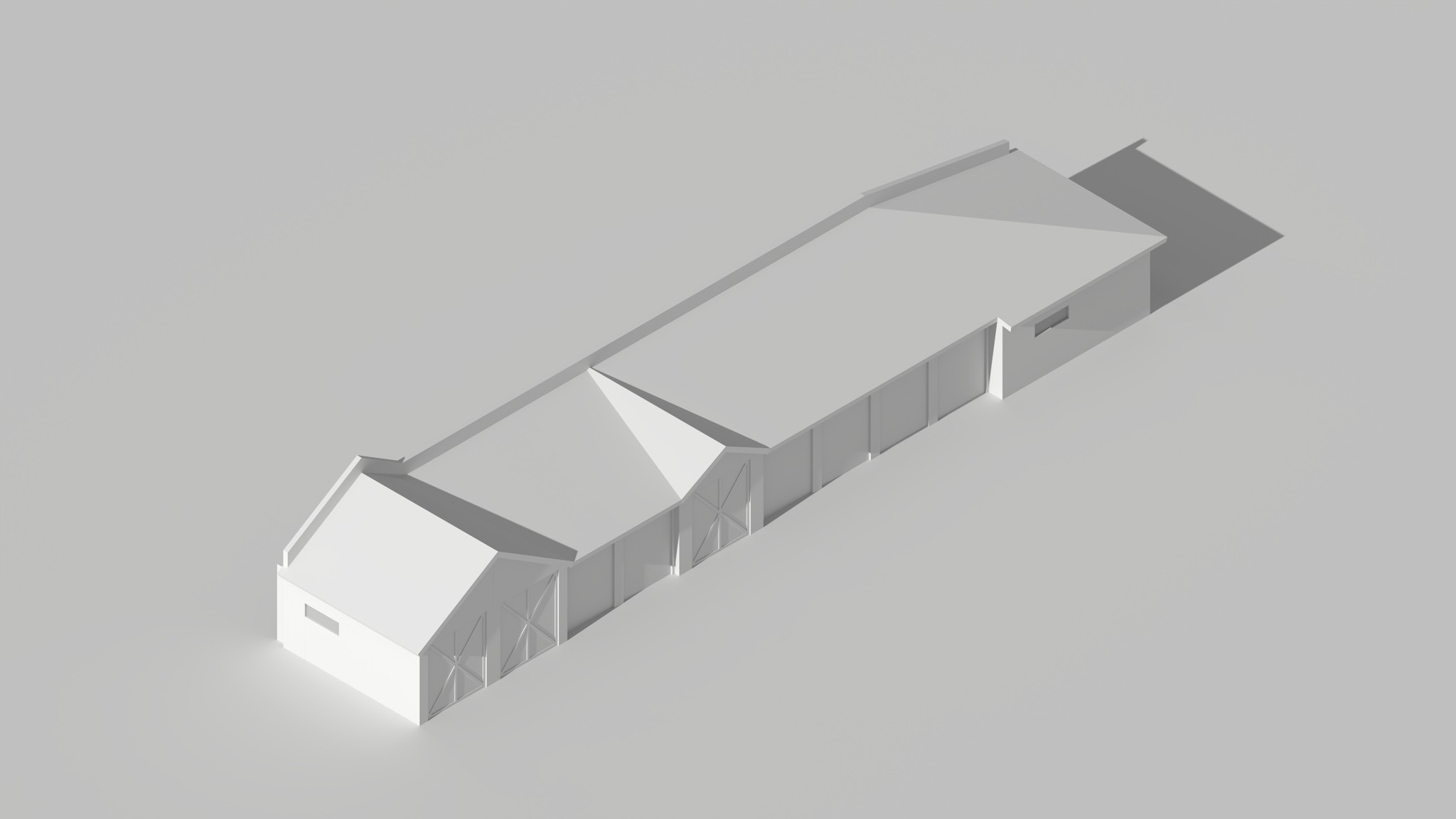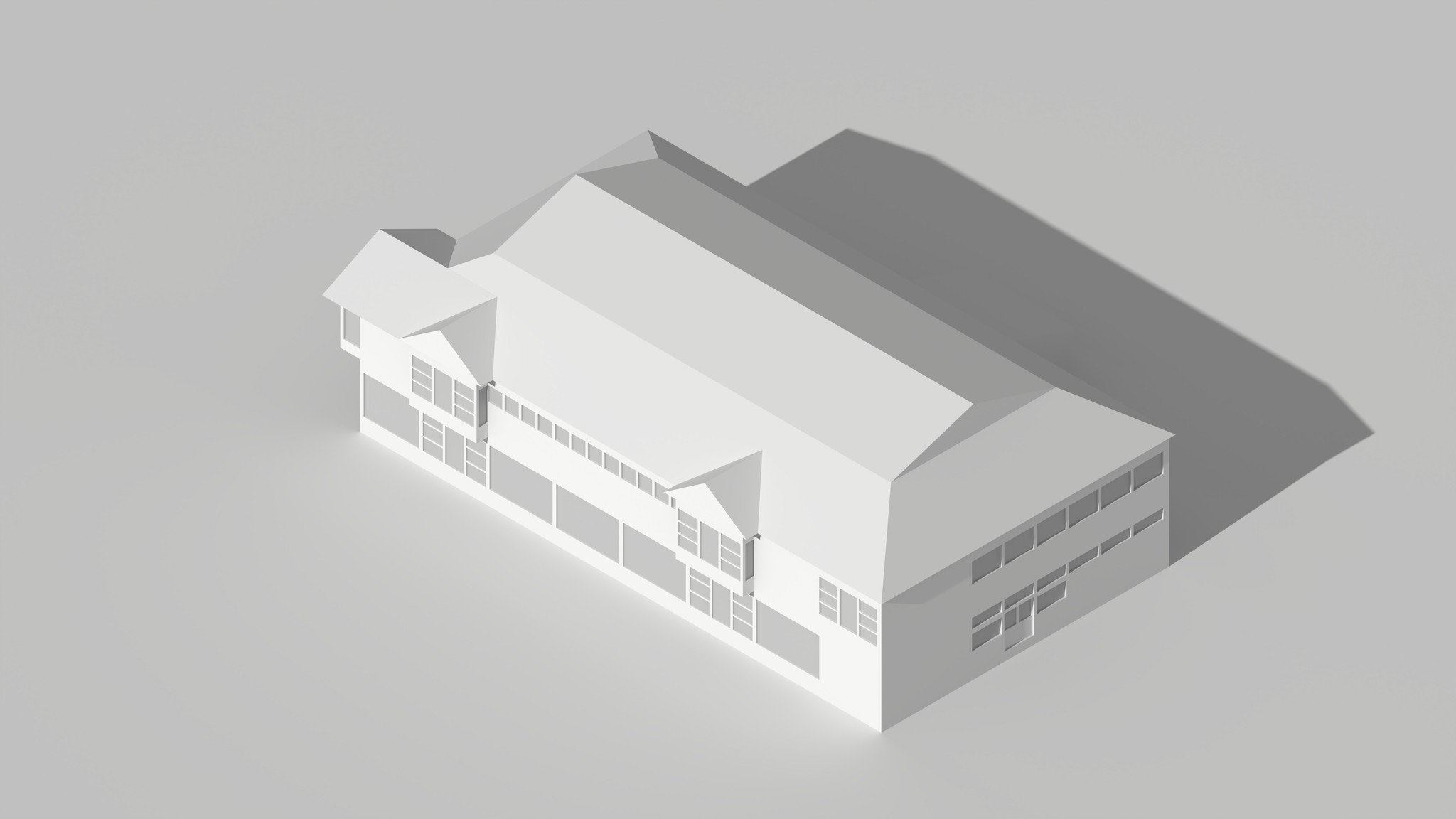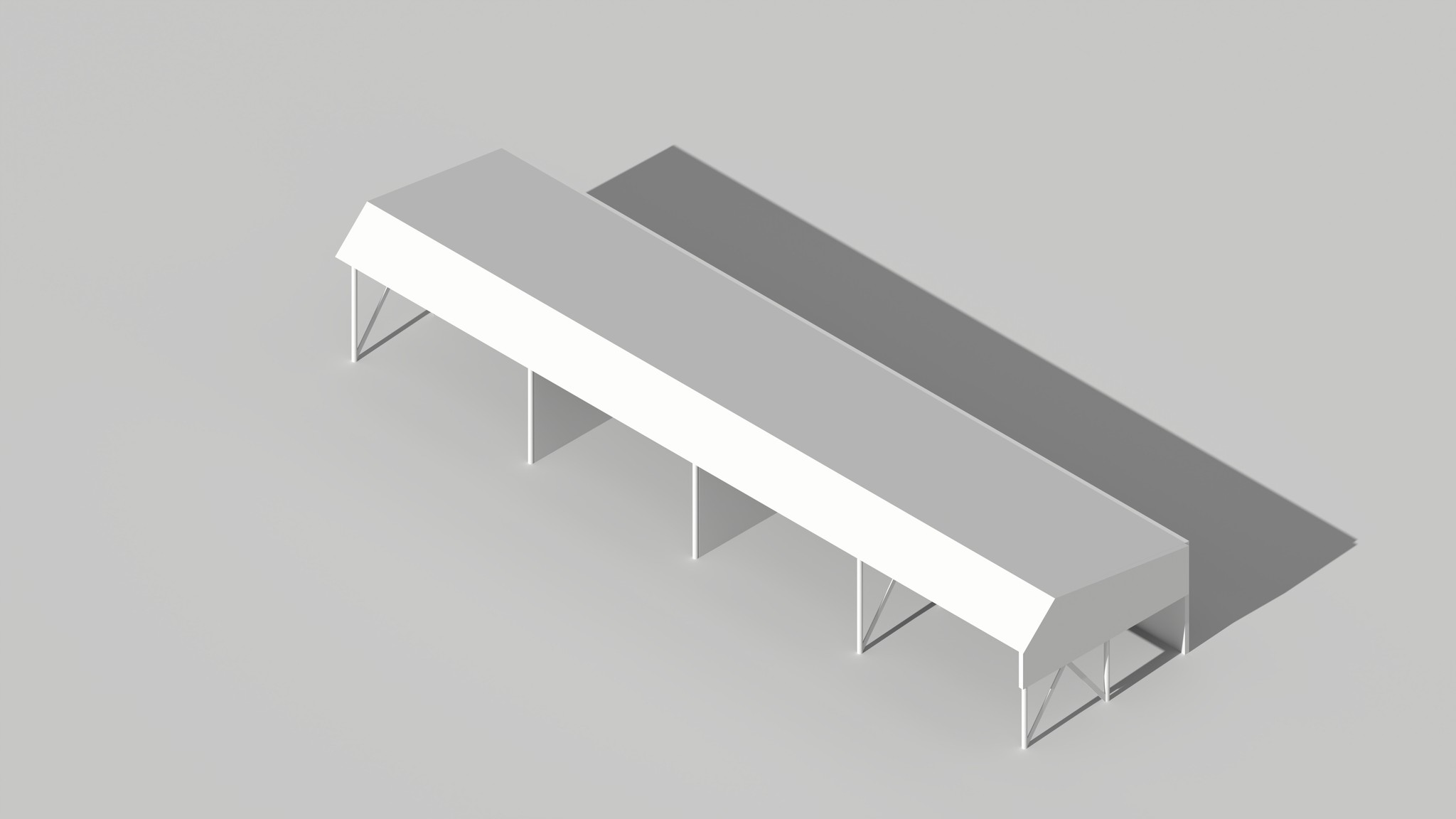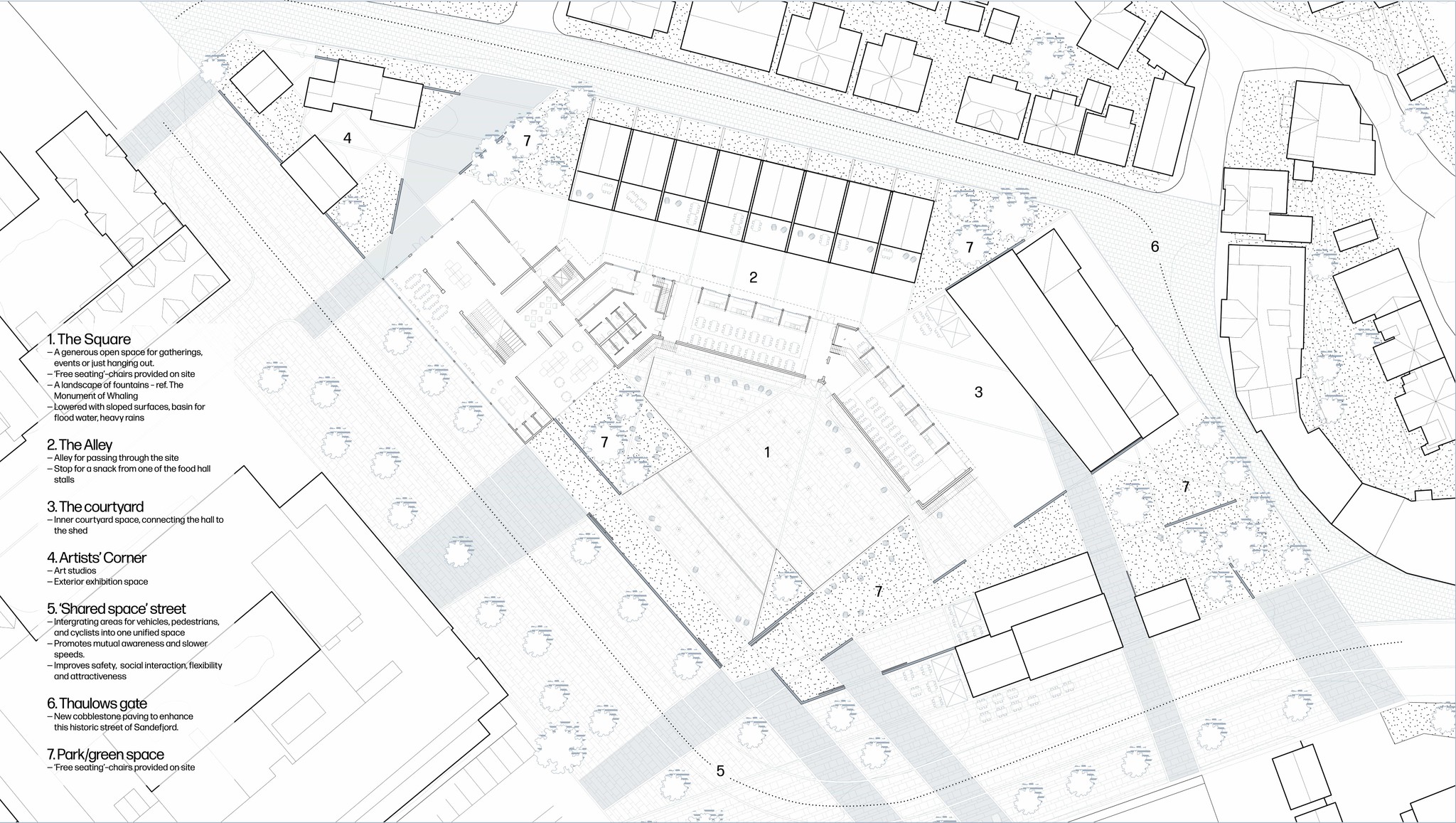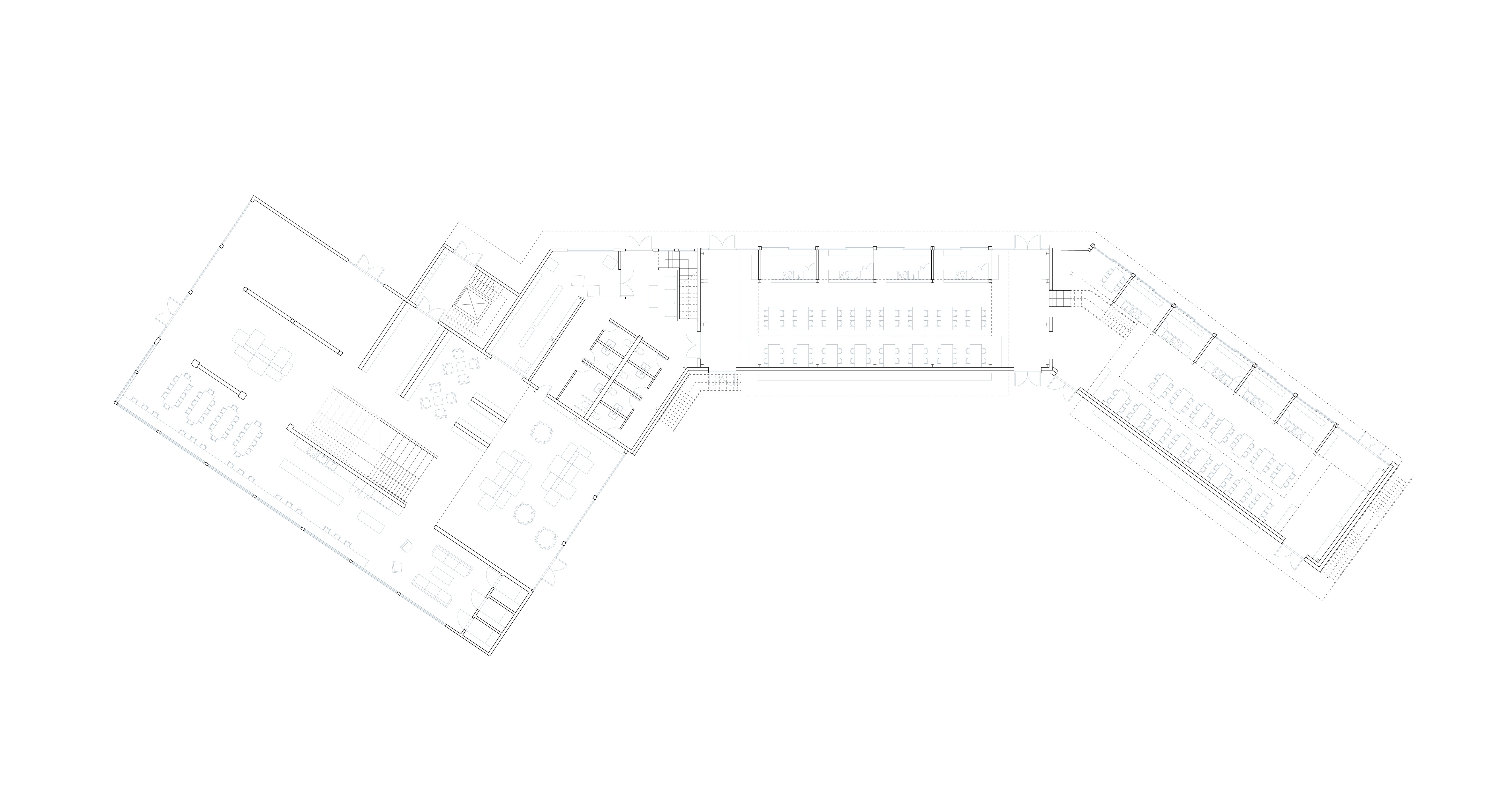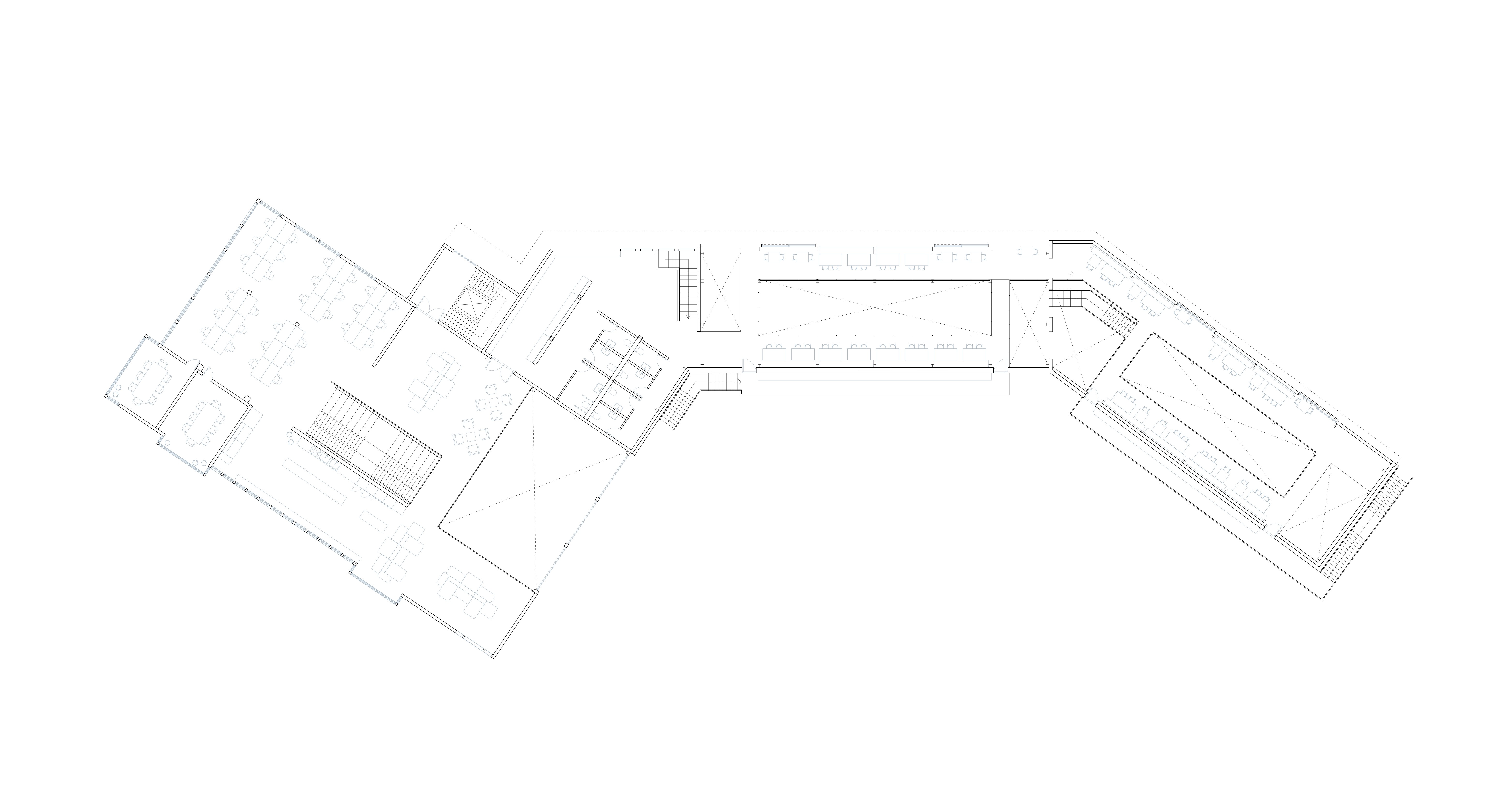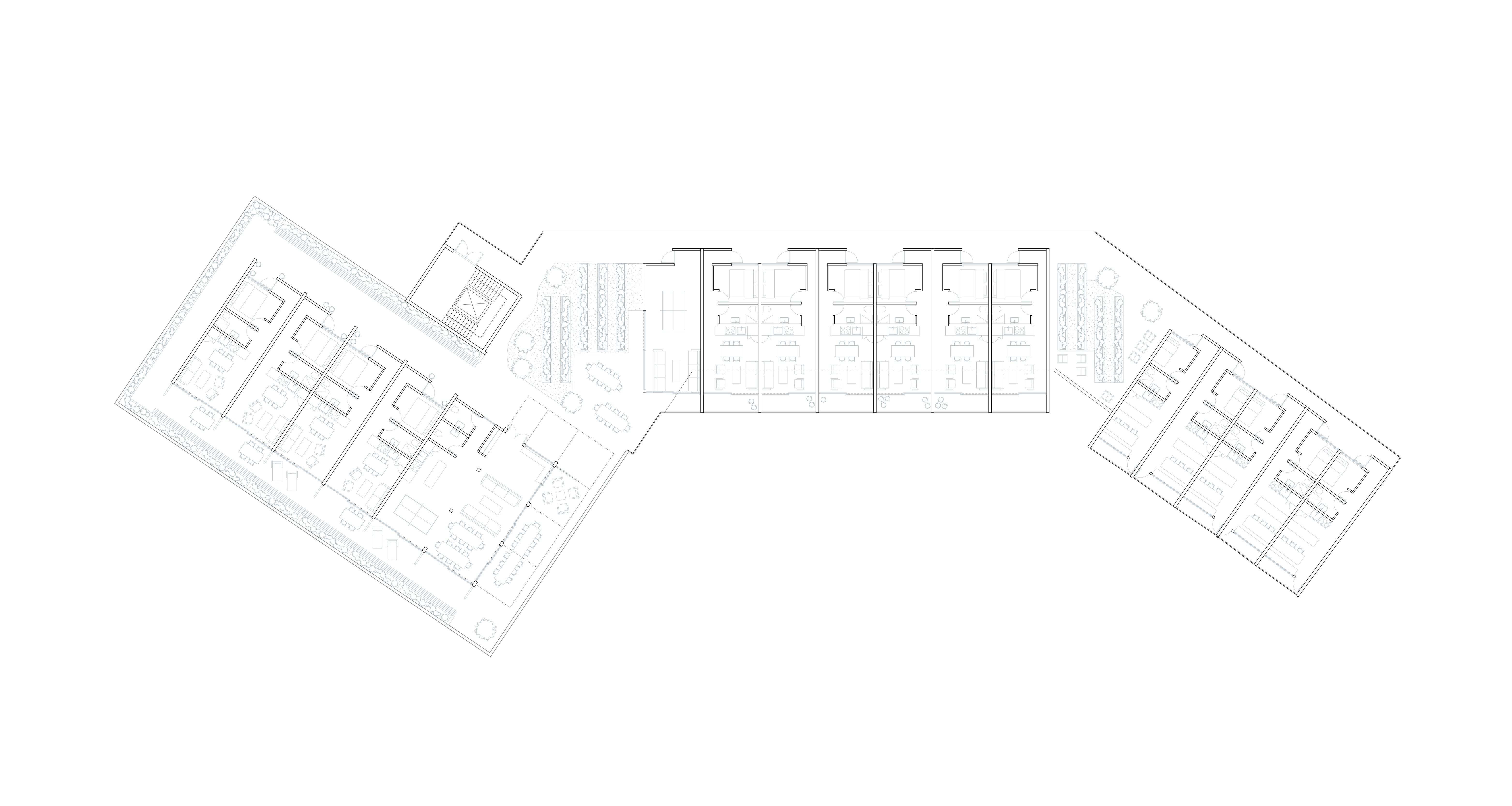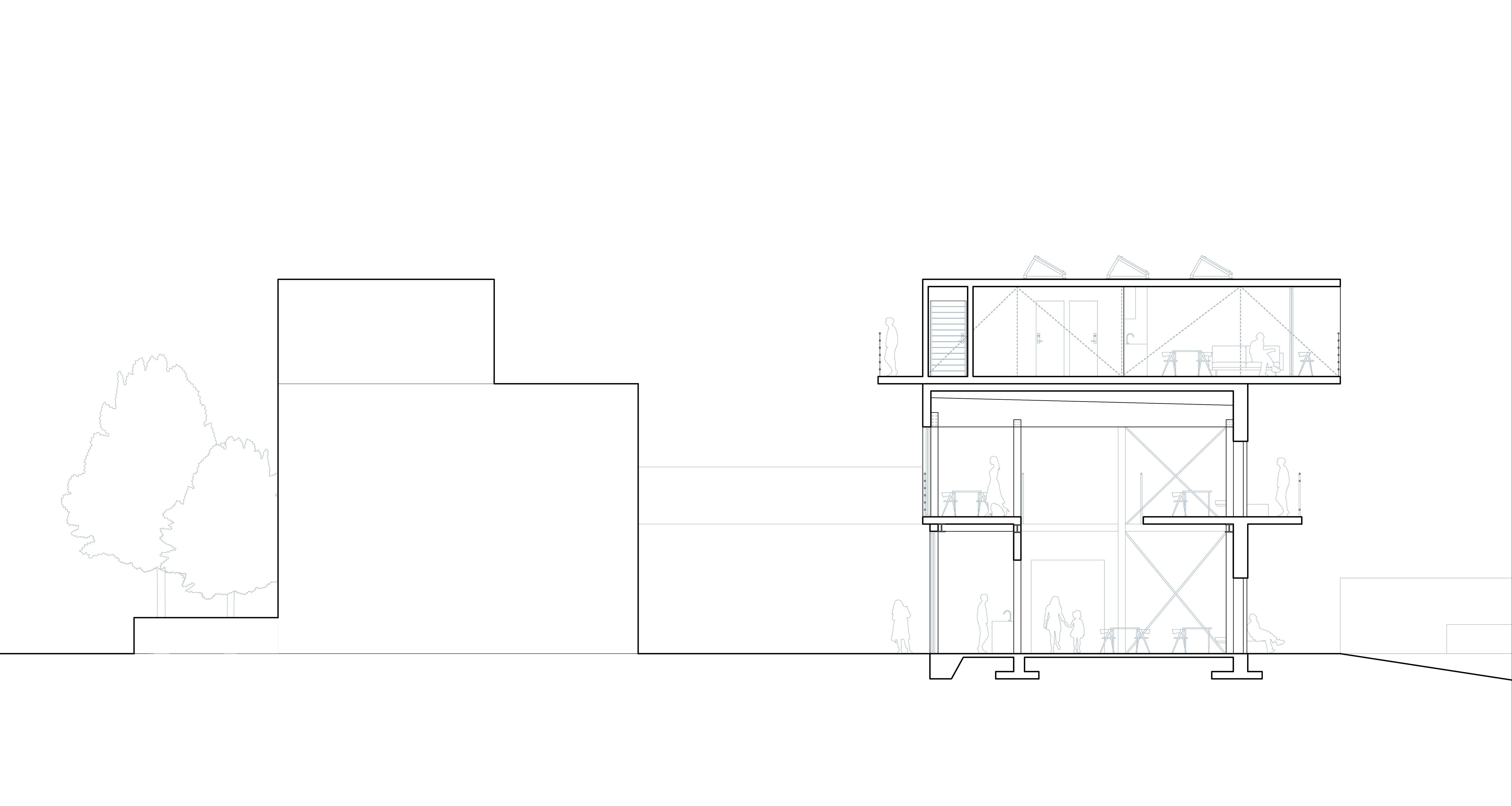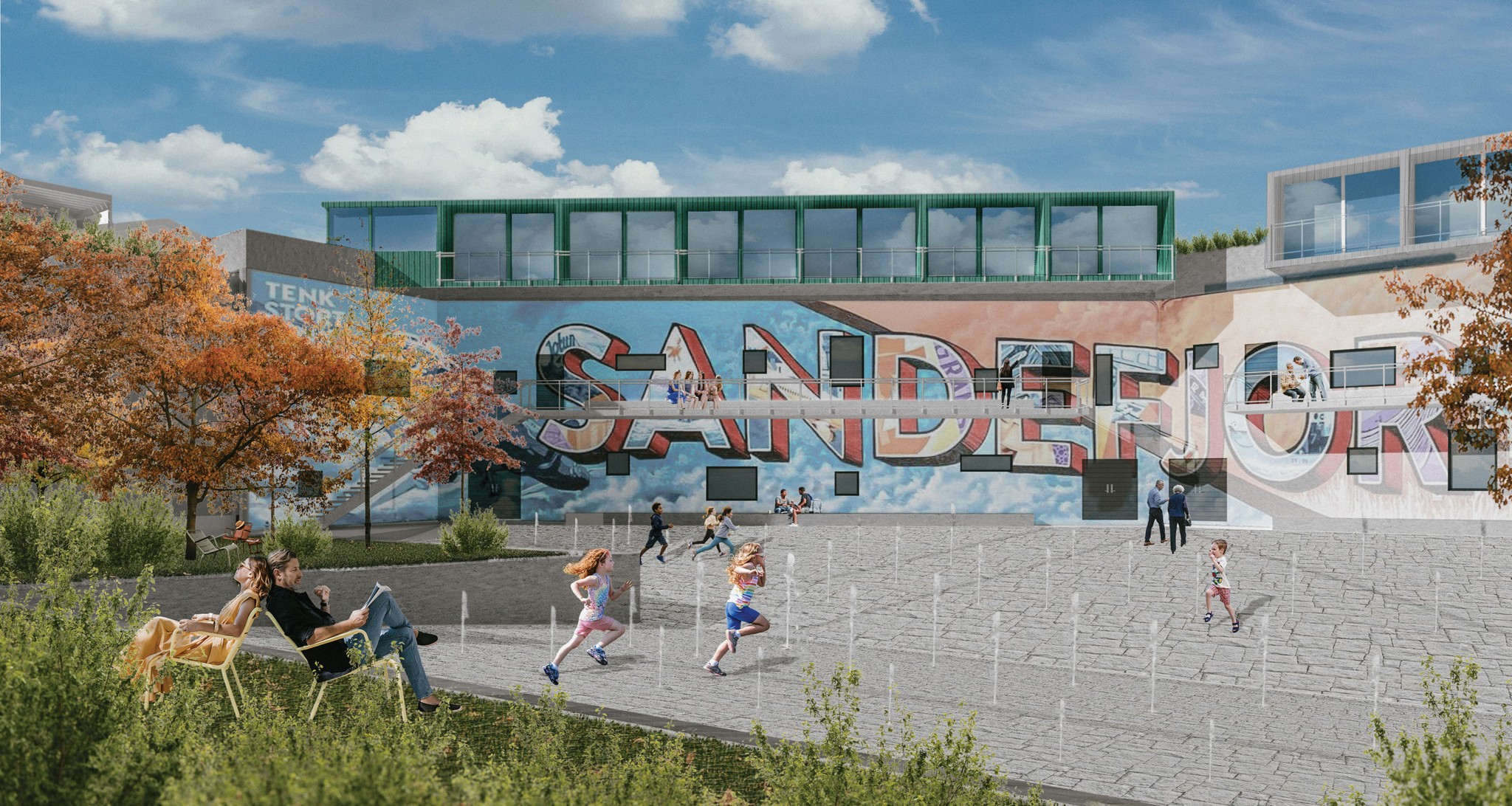Patchwork
Diploma project
2024
Patchwork envisions a redevelopment of Carlsentomta, an abandoned greyfield in the harbor of Sandefjord. With preservation and transformation as key tools, the project aims to create a diverse and engaging mixed-use environment that honors local history and character, challenging the conventional approach to greyfield redevelopments.
Of course, sites like this are not unique to Sandefjord. Abandoned greyfields like Carlsentomta have become a familiar sight in towns all over Norway, where industrial activity has lost relevance or is now undesired. A patchwork of abandoned industrial buildings can usually be found within sites like these. Carlsentomta contains two large steel frame storage halls, a timber frame storage hall, and a collection of pitched roof timber and masonry buildings of different sizes. While their aesthetics and conditions vary, most developers would consider them of little value – if any at all.
As a result, all the buildings are to be demolished in the latest redevelopment proposal from the local building developers and Sandefjord municipality. In fact, none of the buildings were even considered preserved or transformed. The remaining spaces are either to be occupied with semiprivate green spaces or new and generic one- to two-story buildings with privatized commercial spaces. This is not an uncommon practice for sites and buildings of this manner, but considering we are dealing with a climate crisis where the building industry is responsible for approximately 40% of global carbon emissions, surely preservation and transformation should at least be considered an option worth exploring.
However, this is not the only issue. The aesthetics and programs of the proposal have generated an uproar among the people of Sandefjord. In the local newspaper, people have expressed concerns about the buildings’ alienation and criticized the proposal for its generic appearance, which they believe lacks local character. Additionally, they argue that the proposed program, which privatizes the site with identical apartments and generic commercial spaces, offers little value to the local community at such a central and significant site in Sandefjord – one directly adjacent to the waterfront in the south and the oldest part of the town in the north.
It must be pointed out that this engagement has not appeared in a vacuum. In the eastern part of town, the inhabitants have experienced firsthand how the high-rising, generic-looking apartment blocks of recent years have created windy, shadowy, and generally undesirable urban spaces. Furthermore, a connection could be drawn to the nationwide uproar of Arkitekturopprøret, which has engaged people by the thousands in recent years, expressing similar dissatisfaction over contemporary architecture and urbanism.
To address these concerns, the scope of my diploma project is to develop a comprehensive plan and vision for the site of Carlsentomta that provides a diverse and dynamic public program in mixed-use buildings. This includes residential units alongside spaces for art, culture, culinary experiences, performance venues, co-working, workshops, green areas, and other similar amenities. Establishing how the site reacts to the adjacent features of the town, like the main road crossing through the area, the waterfront, and the neighboring area of 19th-century houses, has also been significant. The main aim of my diploma, however, is to challenge the conventional approaches to greyfield redevelopment in Norwegian towns by applying an alternative working method. In my approach, the notion of preservation and transformation is not overlooked but, on the contrary, used as the fundamental tool to drive the project forward. In this way, my project is to become the counterpart to the previous regulations and proposals and exhibit the neglected, forgotten, or undiscovered possibilities in building upon the provenance of the site and projecting it forward. Consequently, this determined a collection of preconditions for the area’s architecture and urban structure.
My role as an architect has been to maneuver within these preconditions with architectural additions, subtractions, and reorganizations, enabling the patchwork of the past to collide with the patchwork of new ideas and programs. Like how the former alley for gathering timber supplies becomes a pleasant way to pass through, maybe stopping for a snack. Or how the main road crossing the site is kept in place in order to preserve and keep costs down but is transformed into a shared space street – integrating areas for vehicles, pedestrians, and cyclists into one unified space, which promotes mutual awareness and slower speeds. Or how the preservation of the wall with the Sandefjord mural enables the creation of an inner square for the inhabitants of the city. I hypothesize that the utilization of this methodology has created an architecture that is not only more distinctive but also more deeply rooted in its locale. The act of colliding patchwork uncovers the unique qualities of the existing structures and sustainably offers a more diverse collection of spaces that encourages an engaging urbanity to greyfields in small towns like Sandefjord.

